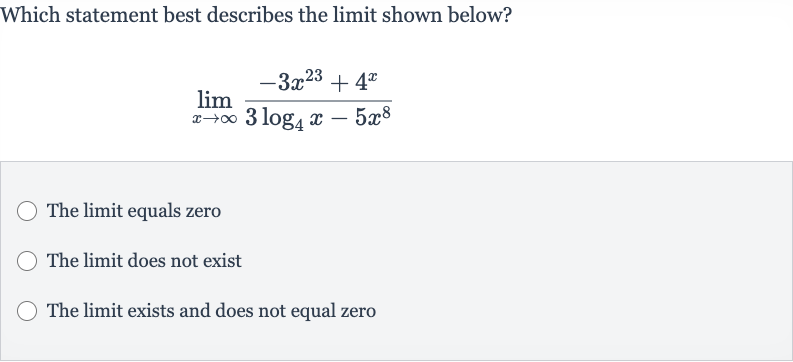Full solution
Q. Which statement best describes the limit shown below?The limit equals zeroThe limit does not existThe limit exists and does not equal zero
- Given Limit Expression: We are given the limit expression:\lim_{x \to \infty}(\-3x^{23} + 4^{x}) / (3\log_{4}x - 5x^{8})To find the behavior of this function as approaches infinity, we need to determine the dominant terms in the numerator and the denominator.
- Determining Dominant Terms: In the numerator, the dominant term is because as approaches infinity, will grow much faster than , which is exponential but does not depend on in the base.In the denominator, the dominant term is because as approaches infinity, will grow much faster than the logarithmic term .So, we can simplify the limit to focus on the dominant terms in the numerator and the denominator:
- Simplifying the Limit: Now, we simplify the expression by dividing the coefficients and subtracting the exponents of : As approaches infinity, will also approach infinity. Therefore, the limit of the simplified expression as approaches infinity is also infinity.
- Final Limit Evaluation: Since the limit of the simplified expression is , the original limit also approaches . This means that the limit does not equal and it does exist, but it does not equal a finite number.Therefore, the correct statement is: The limit exists and does not equal .
More problems from Power rule
QuestionGet tutor help
QuestionGet tutor help
QuestionGet tutor help
QuestionGet tutor help
QuestionGet tutor help



